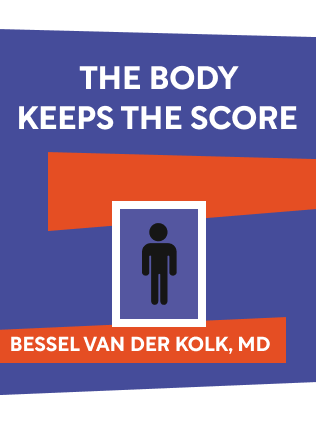

This article is an excerpt from the Shortform book guide to "The Body Keeps The Score" by Bessel van der Kolk. Shortform has the world's best summaries and analyses of books you should be reading.
Like this article? Sign up for a free trial here .
Does cognitive behavioral therapy for PTSD work? How effective is it and when is it the right course of treatment?
Cognitive behavioral therapy for PTSD is also known as talk therapy. It is an important method of working on healing trauma.
Read more about cognitive behavioral therapy for PTSD and ways it is used.
Cognitive Behavioral Therapy for PTSD
Does cognitive behavioral therapy for PTSD work? Yes and no. Find out why it works and why it might not be enough.
Talking Can’t Heal Trauma, But It’s an Important First Step
As we’ve discussed, cognitive behavioral therapy for PTSD alone isn’t adequate to heal trauma — and if the patient isn’t yet ready to cope with the emotions that come up, it can retraumatize her and increase fixation on the trauma. What’s more, it can be difficult for trauma survivors to articulate what happened to them, because their brains didn’t process the event as a coherent narrative but rather as a collection of fragmented sensations.
However, talking and acknowledging your trauma in cognitive behavioral therapy for PTSD is a critical piece of the healing process. First, talking about your trauma breaks the silence and isolation of keeping it a secret; although many trauma survivors are inclined to withhold or suppress their traumatic memories in an attempt to gain control over the overwhelming emotions they bring up, failing to acknowledge your trauma and the reactions it triggers only inhibits you from managing it.
Second, suppressing your emotions takes an incredible amount of energy and attention, and takes away from your capacity to pursue goals; as a result, you’re likely to feel bored and disengaged from life. And despite your efforts, your chronic hypervigilance is continuing to trigger stress hormones — causing physical ailments such as headaches, muscle pain, and digestive issues, as well as irrational emotions and behavior. You can’t deal with these symptoms until you’ve identified what’s causing them.
Third, when you open up to other people, you create the opportunity to feel heard and understood, which activates your limbic brain and helps in the physiological healing process. Sharing your experience with others can help break down the isolation of trauma and reconnect you with your community.
On the other hand, if someone fails to respond or understand, it can be further damaging. Non-trauma survivors often can’t handle or don’t want to hear the details of terrible wartime tragedies or child abuse, so trauma survivors withdraw of develop a more palatable narrative for public consumption.
Trauma sufferers need safe spaces to share their experiences in order to recover. This is why therapists are so helpful, as are support groups like Alcoholic Anonymous, Narcotics Anonymous, and Adult Children of Alcoholics.
Trauma Creates Two Versions of the Same Event
Trauma survivors carry two parallel stories about their experiences, from two forms of self-awareness:
- Autobiographical self-awareness connects your experiences through the timeline of your life and creates an ongoing narrative. This awareness is based in language and creates the story of your experiences that you tell other people.
- Moment-to-moment self-awareness is rooted in physical sensations, but if you feel safe and have time, you can put the experience into words. This awareness is the deep, personal truth of how you experience situations.
The two systems are located in different parts of the brain that are largely disconnected, so these two forms of self-awareness don’t always align: You may tell others that you are happy, but your body language is slumped and hints at the fact that you feel unhappy. Trauma victims develop a coherent narrative of their trauma that they tell others, but it doesn’t capture — and may even downplay — the terror of their experience.
If you focus too heavily on your autobiographical self-awareness, you may lose sight of your internal truth and suppress your moment-to-moment self-awareness. However, in order to heal, trauma survivors must reconnect with their moment-to-moment self-awareness and come to terms with how the experience of their trauma felt, reconciling that with the often brave-faced narrative they’ve developed in order to endure.
Trauma Can Impede Retelling
There are some limits to cognitive behavioral therapy for PTSD. Sometimes trauma survivors become so overwhelmed by their traumatic memories that the language area of their brain shuts down and they’re rendered speechless. In other cases, the survivors may try to tone down their retelling of a traumatic event so that it doesn’t trigger them, but as a result they may sound evasive and unreliable.
Cognitive Behavioral Therapy for PTSD: Methods to Express Yourself
Since it can be so difficult to connect your inner experiences to language, there are methods you can use to help bridge that divide.
- Notice physical sensations. Being aware of how your voice changes or where you feel tension in your body can lead you to notice the emotions behind those sensations.
- Art, music, and dance can be outlets for expressing your innermost feelings when you can’t put them into words. These outlets can also help you connect with your feelings so that you can then write about them.
- Try free writing, an exercise in which you choose an object and begin writing your associations with that object and continue writing you stream of consciousness without stopping, re-reading, or self-editing. Writing something that is for your eyes only allows you to express yourself without worrying about anyone else’s judgment. Later, when you read back through what you wrote, you’re likely to discover surprising inner truths.
The “Switching” Phenomenon
When people express difficult or intimate things, they’re accessing different physiological and emotional states. As a result, their manner of speaking or writing can change profoundly.
The pitch, tone, and volume of a person’s voice may change dramatically between when she’s talking about the schedule of her day and when she’s talking about a deep secret or traumatic experience. Likewise, her handwriting may change from flowy cursive to rigid block letters, and from straight up-and-down to slanted (when people write about their deepest fears, their handwriting tends to be more childlike).
Furthermore, some people may even show changes in their personality: They may morph from shy to aggressive, or docile to domineering.

———End of Preview———
Like what you just read? Read the rest of the world's best book summary and analysis of Bessel van der Kolk's "The Body Keeps The Score" at Shortform .
Here's what you'll find in our full The Body Keeps The Score summary :
- How your past trauma might change your brain and body
- What you can do to help your brain and body heal
- Why some trauma survivors can't recognize themselves in the mirror






